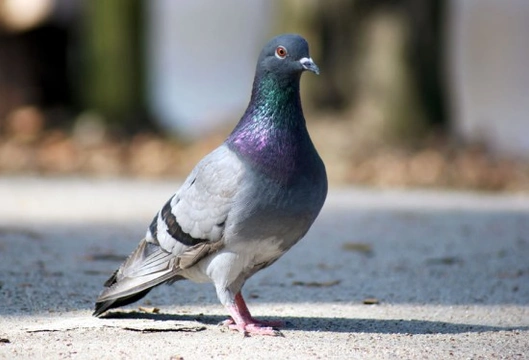
Racing pigeons – how to get started
The sport of racing pigeons began in Belgium in the 19th Century as a result of using homing pigeons to deliver messages in the days before the postal service, telephones and of course, email. Some experts suggest that the roots of pigeon racing can be traced back as far as 220AD, with mentions in the works of Roman author and philosopher Pliny.Primarily used by the military for carrying sensitive, timely information across borders and front lines, homing pigeons were the first domesticated bird and have been used for centuries to carry information between points, using their strong homing instinct to find their way. Interestingly, one of the World’s biggest providers of information, Reuters News Services began as a pigeon service sending stock prices between Belgium and Germany.Although the sport is often associated with the more mature pigeon fanciers, it is growing in popularity, with some birds changing hands for many thousands of pounds.
Getting started
The best place to start if you’re considering getting involved in pigeon racing is an industry body such as the Royal Pigeon Racing Association (RPRA). It’s Royal because the Queen is patron of the sport and around 100 racing birds are kept in the lofts at Sandringham.The RPRA can help by supplying information on the type of equipment needed, where to buy racing birds and what to look for in a good racing pigeon – as well as information on the races themselves. The Association also has a beginners’ pack which it will send to anyone thinking about getting involved in the sport.
What do I need?
Contrary to popular belief you don’t need your own loft in order to enjoy pigeon racing, although if you do decide to build a loft this will involve an initial outlay. There is a system known as ‘One Loft Racing’ whereby owners can pay a loft manager to take care of their birds and set them off on race day. This also incurs a cost, but if you don’t have the space for a loft of your own it’s a great option. The one loft system usually involves four races in the year and you can opt to pay another entry fee and move your pigeon to another loft manager to continue its career, you can return the bird to the breeder or sell it to another fancier.As well as a home for your pigeons, you will also need to make sure your birds are vaccinated and receive appropriate veterinary care when needed; feed will also be a regular outlay. Apart from these things, you will also need to buy your bird or birds. Young birds and certain stock birds usually start around £50 - £75, although some of the most successful pigeons can carry a very hefty price tag reaching many thousands of pounds. The most expensive racing pigeon ever sold changed hands recently for a whopping $320,000! Some breeders will sell a ‘racing kit’ of four or six birds which usually has a very reasonable discount.
What does racing involve?
As well as the one loft system, those fanciers who are lucky enough to have their own lofts can enter a number of races across the world. On the day of a race owners will gather at the same release or ‘liberation’ point, and the winner is the bird who clocks up the highest average speed. There are many hazards along the way – predators, the weather, power lines and disorientation can all affect the outcome of a race.The distance between the liberation point and home is calculated in yards, and all birds from the same club are released together. Every bird is fitted with a rubber or electronic race ring which is placed in a clocking device or attached to computer when it returns home. The machine will then calculate the pigeon’s average speed and the one with the fastest average speed will take the victory spoils, which in some cases is a very large amount of money.The Brazilian Racing Grand Prix is the largest race in South America, while in Taiwan prize money for races can reach into the billions of NT dollars. South Africa is the home of the World’s largest and most extravagant one loft race. The Sun City Million Dollar Pigeon Race features 4,300 birds from 25 different countries competing for a slice of the $1.3 million prize fund. The overall winner pockets around $200,000, while other winners of the race can expect smaller amounts and other prizes such as cars.
How do the pigeons find their way home?
It is thought that homing pigeons use a wide range of skills to make their way home. Many experts believe that pigeons use their in-built solar and magnetic compasses to navigate their way across the globe. The Earth’s surface is littered with magnetic contours which, it is believed, the birds use to get back home.It is also thought that pigeons might also use the sun to navigate and many fanciers make sure their birds have the chance to track the movement of the sun before they’re released on race day. Some experts even believe that pigeons have the ability to recognise landmarks such as roads and rivers and research conducted by Oxford University is hoping to support or dispute this theory. The pigeon has a highly developed sense of smell and can absorb and detect odours through the wattle, the white crusty patch on its beak.
Is it cruel?
Fanciers argue that their birds are among the best cared for animals on the planet, with no expense spared on feed, housing and care. These birds are bred to race and are viewed by their owners as supreme athletes. However there is evidence to suggest that many birds never make it home and many return injured. Those that don’t make the grade are reported to be culled, although many fanciers will keep those non-racing birds on for breeding and training purposes.



